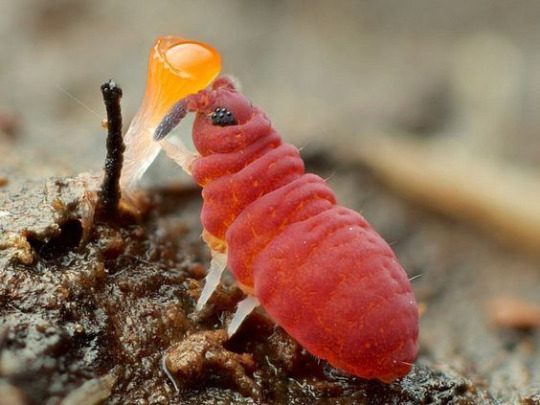Text
2K notes
·
View notes
Text
211 notes
·
View notes
Text
119 notes
·
View notes
Text
724 notes
·
View notes
Text
168 notes
·
View notes
Text








🐒 MONKEY (pithekos, simia) ✨ "He who laughs at the monkey sees himself, but does not dare to recognize it." — unknown
The monkey does not apologize — not for its reflection, nor for its play. Its appearance is always unsettling: a laugh and a turning-away at once. It is the imitator, mirroring human gestures, while amplifying their absurdity. The monkey is the mirror of truth hidden in ugliness — distortion that reveals.
It symbolizes the dark side of human nature, lust, sexual promiscuity, and malice — the embodiment of the five sensual desires.
It may symbolize vanity, hypocrisy, and shallowness — but also serves as a warning not to take ourselves too seriously. The monkey is a boundary-breaker: a messenger of physical senses, playfulness, and shamelessness. But its true meaning is seen only by those who do more than laugh — those who understand what is being shown back.
27 notes
·
View notes
Text



🦅 VULTURE (vultur) ✨ "Only those who look into the deepest dark will be the first to see the light." — unknown
The vulture circles where others no longer dare to linger. It does not kill – it cleanses. It is the guardian of order after death, the silent herald of a new beginning born from an ending. It is the bird of celestial vision: it sees far, and notices what others fear to face. This is why it can become a symbol of Christ the Redeemer, or of nature’s selfless, immaculate mother.
The vulture reminds us: decay is not the end, but transformation. Even the sinful soul may be purified – if it can rise above itself. It embodies instinctive wisdom, intuition, clear vision, and judgment-free acceptance – yet it may also be a dark omen if its presence evokes fear.
58 notes
·
View notes
Text
4K notes
·
View notes
Text
957 notes
·
View notes
Text

What's this? It's Polymita picta, aka painted snail, from Cuba. (Photo credit: Aliesky del Rio Leal)
2K notes
·
View notes
Text

Beelieve it or not, this blue bee is the real deal! 🐝 Meet the blue carpenter bee (Xylocopa caerulea). This large bee can reach lengths of up to 1.1 in (2.8 cm); compare that to a European honey bee which typically grows up to 0.7 in (1.8 cm) long! Unlike honeybees, this critter doesn’t live in large hives, but instead spends most of its time alone. This insect can be found in parts of India, China, and Southeast Asia where it plays an important role in pollinating its habitat.
Photo: Cheongweei Gan, CC BY-NC 4.0, iNaturalist
2K notes
·
View notes
Text

Marsh Rabbit (Sylvilagus palustris), family Leporidae, majestically leaping through the water, Wakodahatchee Wetlands, Delray Beach, Florida, USA
photograph by Anthony Goldman
936 notes
·
View notes
Text

A male ladybird spider (Eresus hermani) in Budapest, Hungary
by Nikola Rahmé
900 notes
·
View notes
Text


Numbat (Myrmecobius fasciatus), family Myrmecobiidae, order Dasyuromorphia, Western Australia
ENDANGERED.
Sometimes referred to as the "Marsupial Anteater", and like "true anteaters", they actually eat mainly termites.
Once wide spread across Australia, they are now only found in small colonies in Western Australia and NSW.
photograph by Lyn Alcock
2K notes
·
View notes



